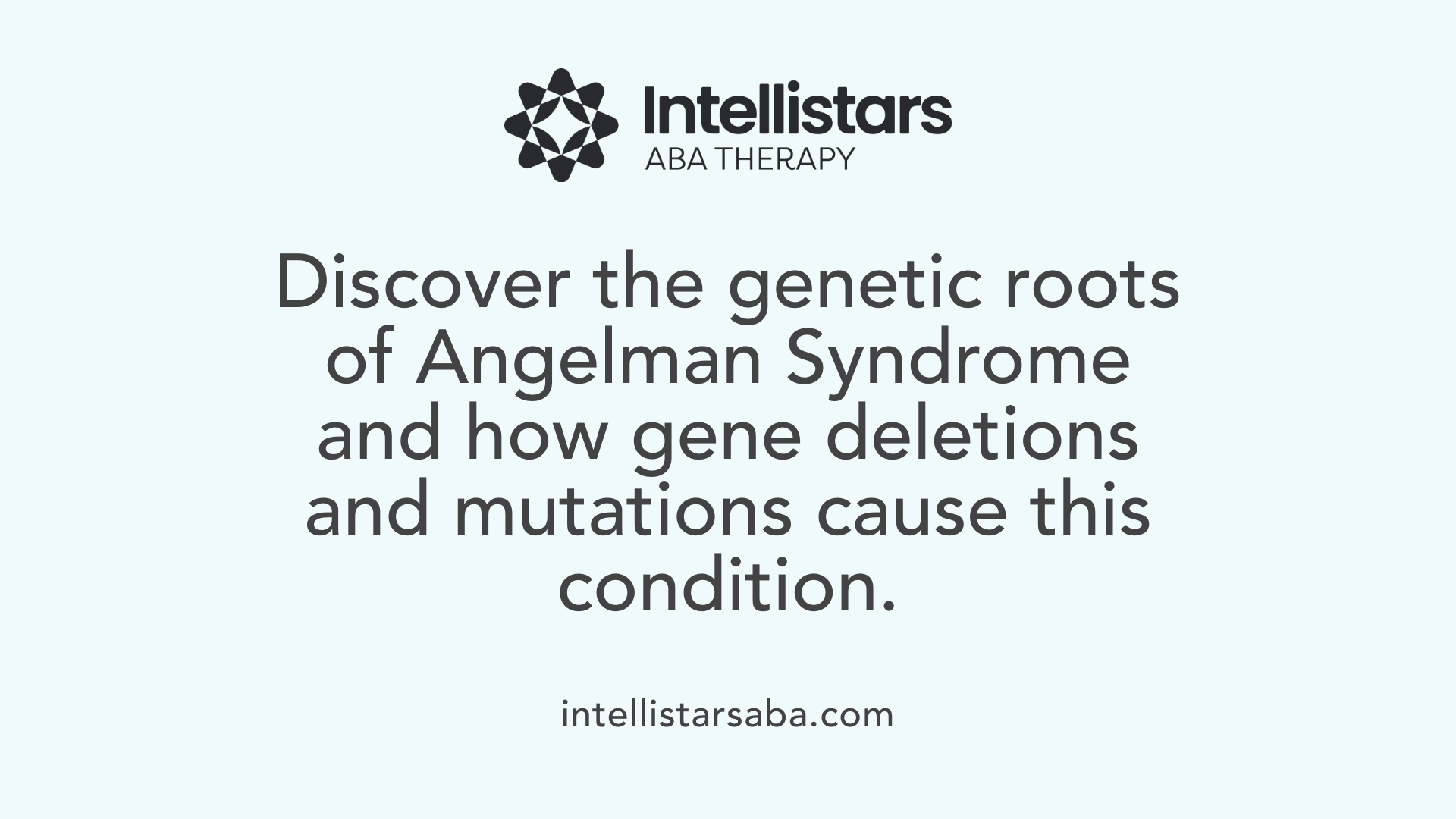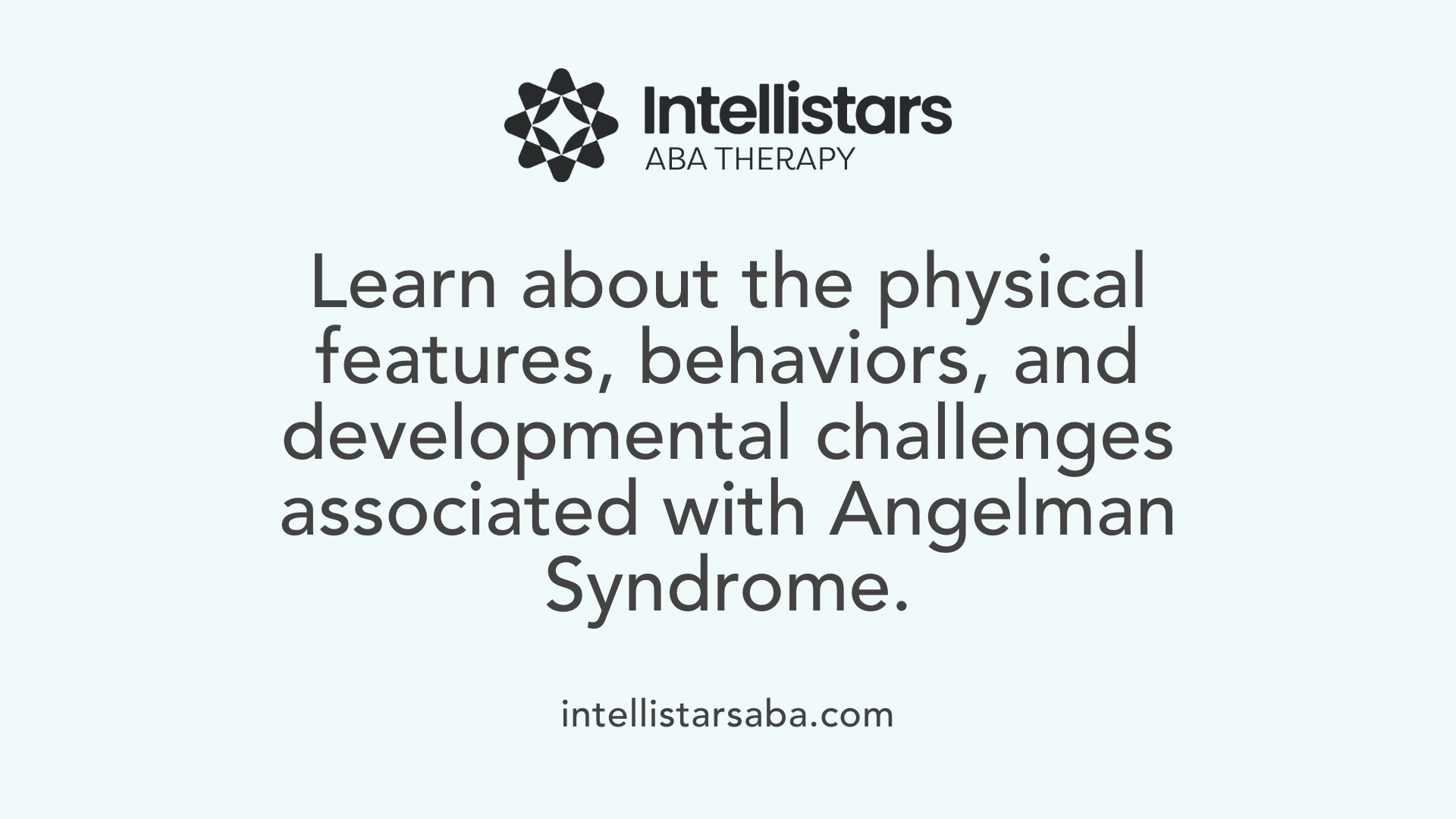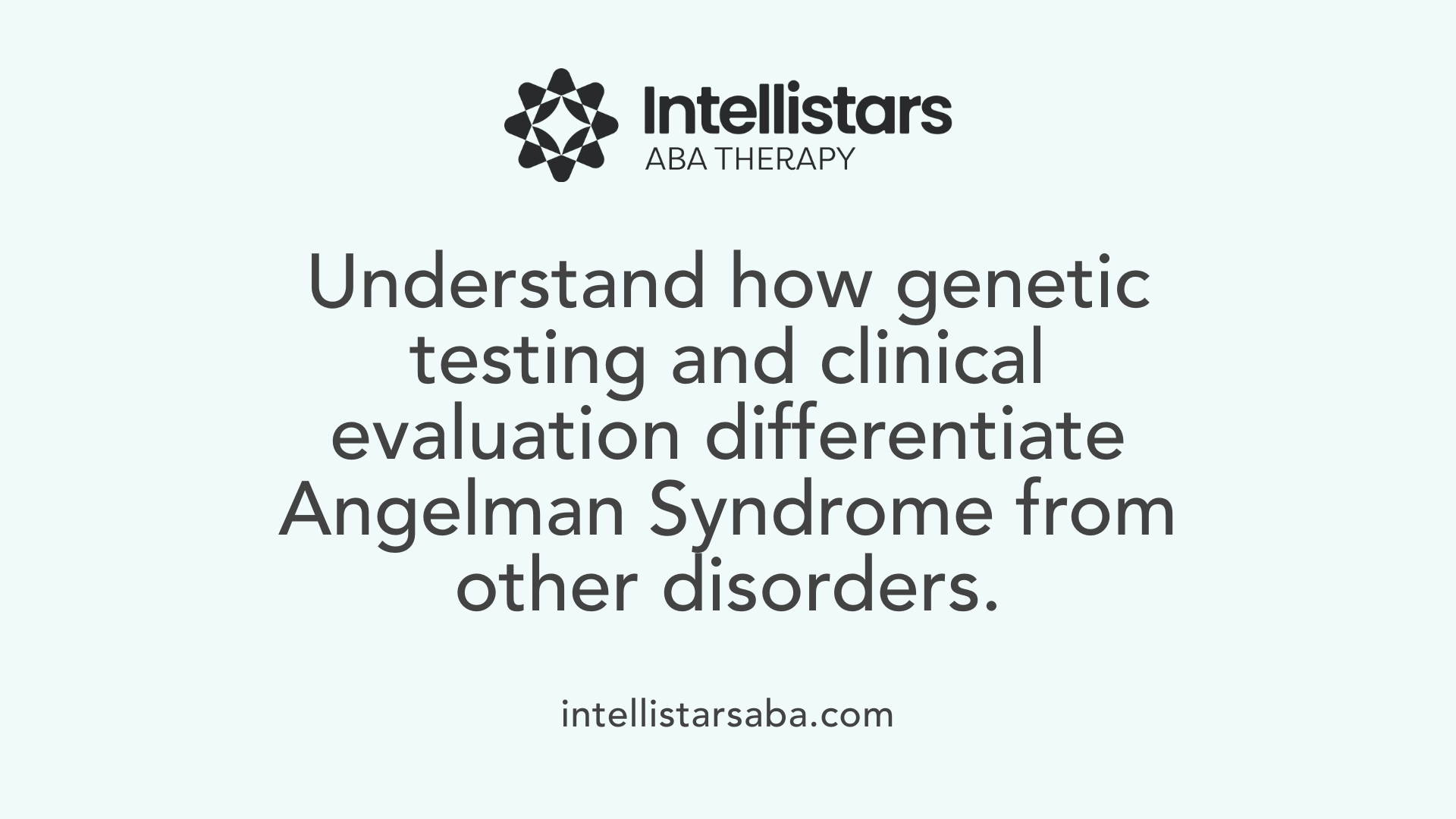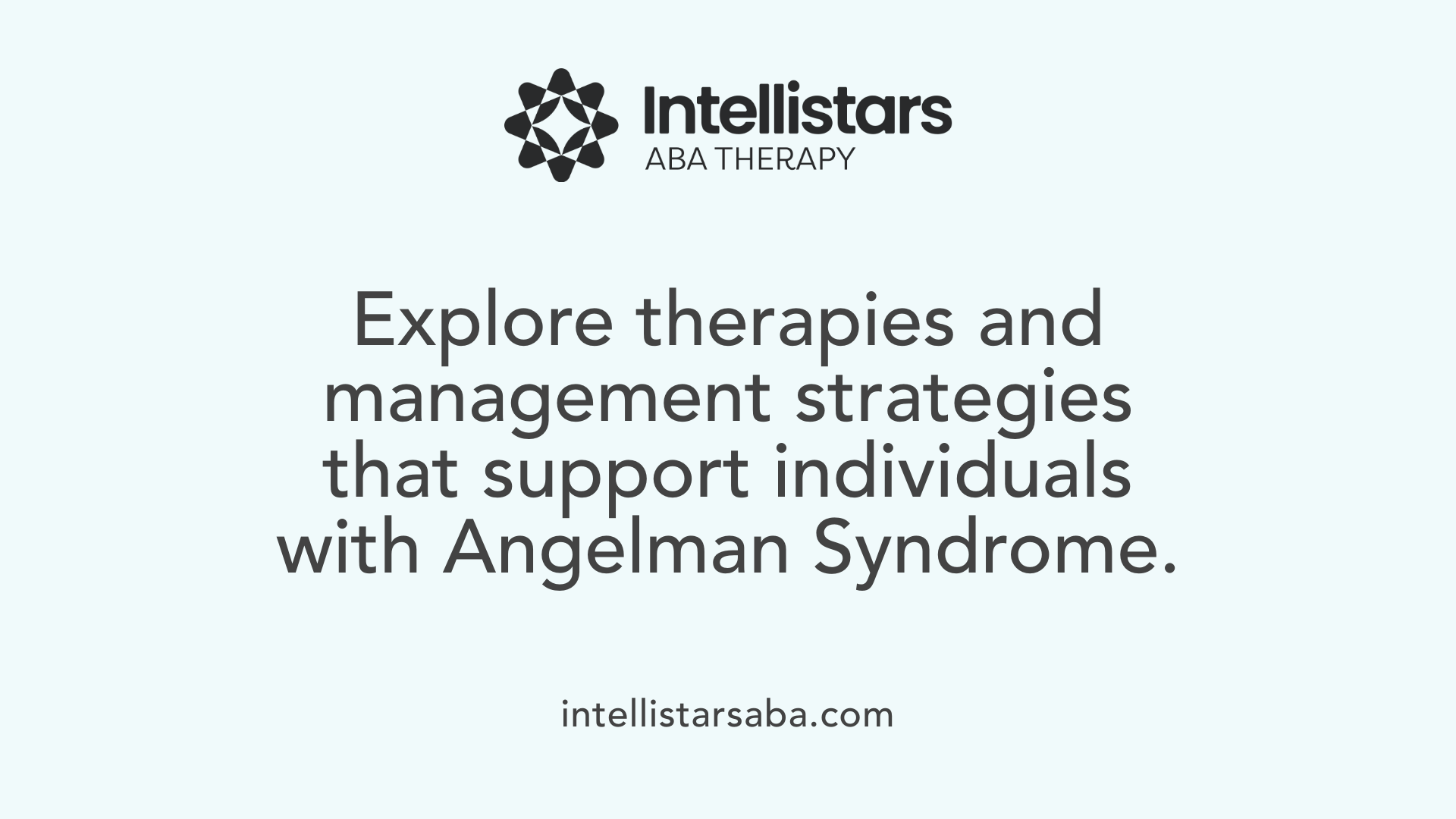An Overview of Angelman Syndrome
Angelman Syndrome (AS) is a rare but complex genetic neurodevelopmental disorder that profoundly impacts an individual's nervous system, leading to significant developmental, behavioral, and medical challenges. First identified by Dr. Harry Angelman in 1965, this condition is characterized by severe cognitive impairments, a distinctive happy demeanor, and a range of physical and neurological symptoms. Despite its rarity, affecting approximately 1 in 15,000 individuals, ongoing research and supportive interventions have improved quality of life prospects for those affected. This article provides an in-depth exploration of the causes, diagnosis, management strategies, and current research efforts surrounding Angelman Syndrome.
Genetic Foundations and Causes of Angelman Syndrome

What causes Angelman Syndrome and how is it inherited?
Angelman Syndrome (AS) results primarily from a loss of function of the UBE3A gene located on chromosome 15q11-q13. In healthy individuals, the maternal copy of this gene plays a crucial role in brain development, especially in neurons. Typically, the paternal copy of UBE3A remains inactive in most parts of the brain because of genomic imprinting—a natural process that silences one gene copy based on its parental origin.
The most common cause, accounting for about 70% of cases, is a deletion of a segment of the maternal chromosome 15 that includes the UBE3A gene. Other causes include mutations within the UBE3A gene itself, which account for around 10-20% of cases, and imprinting center defects, which interfere with the normal activation of the maternal gene. Rarely, paternal uniparental disomy occurs, where two copies of chromosome 15 are inherited from the father, resulting in no active maternal copy.
Most cases of Angelman Syndrome are not inherited but occur spontaneously due to these de novo genetic changes. Conditions such as deletions and imprinting defects are usually new mutations, with a very low risk of recurrence in families. However, if the genetic alteration involves heritable mutations or structural rearrangements, there may be a slightly higher chance of recurrence.
In summary, AS is caused by genetic alterations that effectively silence or delete the maternal UBE3A gene, which disrupts normal neuronal functions essential for development. Understanding these mechanisms helps in diagnosis, genetic counseling, and exploring targeted therapies.
Symptoms, Features, and Clinical Presentation

What is Angelman Syndrome and what are its main characteristics?
Angelman Syndrome (AS) is a rare genetic disorder that affects the nervous system and impairs brain development. It is most often caused by a deletion or mutation in the maternal copy of the UBE3A gene on chromosome 15. This genetic change leads to a range of developmental and neurological challenges.
Children with AS typically display severe developmental delays, including limited or no speech, problems with walking and balance (ataxia), and seizures that often begin between ages 2 and 3. They tend to have a happy personality marked by frequent smiling, laughter, and excitability. Many also show hand-flapping behavior, hyperactivity, and a short attention span.
Diagnosis is based on observing these symptoms and confirming with genetic tests such as methylation analysis or DNA sequencing. Although there is no cure, treatment focuses on managing seizures, supporting development through therapies, and addressing other medical issues to enhance quality of life.
Are there any characteristic physical features and behavioral signs associated with AS?
Physical features in children with Angelman Syndrome include a small head size (microcephaly), a wide mouth, and widely spaced teeth. They often have a flat occiput (back of the head), a protruding tongue, and facial expressions that appear happy and alert.
Behaviorally, individuals with AS are notably cheerful and sociable. They frequently laugh and smile, often inappropriately, and exhibit hand-flapping movements. Overexcitability and fascination with water are common traits. Sleep problems are also typical but tend to improve as they grow older.
Recognition of these physical and behavioral signs helps clinicians diagnose AS early, facilitating timely intervention and support for affected individuals.
| Aspect | Features | Additional Details |
|---|---|---|
| Physical | Small head (microcephaly) | Facial features include flat occiput, wide mouth, protruding tongue, and widely spaced teeth |
| Behavioral | Frequent laughter and smiling | Excitable, hyperactive, hand-flapping, fascination with water |
| Developmental | Delays in motor skills | Speech impairments often severe, with little to no speech |
| Medical | Seizures | Usually begin between ages 2-3, managed with anticonvulsants |
This combination of physical and behavioral signs makes AS distinctive and aids in its early recognition.
Diagnosis and Differentiation from Similar Conditions

How is Angelman Syndrome diagnosed?
Angelman syndrome (AS) is primarily diagnosed through a combination of clinical assessment and genetic testing. Medical professionals begin by observing key features such as developmental delays, speech impairment, seizures, and characteristic facial features.
To confirm the diagnosis, genetic tests are essential. The most common initial test is DNA methylation analysis of the 15q11.2-q13 region. This test can detect around 80% of AS cases caused by deletions, uniparental disomy, or imprinting defects. If methylation analysis does not reveal abnormalities, sequencing of the UBE3A gene is usually performed. This can identify mutations responsible for about 11% of cases. Additional tests like chromosomal microarray, FISH (fluorescence in situ hybridization), or deletion/duplication analysis may be used to find structural chromosome abnormalities.
Overall, confirming AS involves a combination of clinical features and targeted genetic testing, guiding effective management and offering important information for genetic counseling.
Can AS be mistaken for other conditions, and how do medical professionals differentiate it?
Because many symptoms of Angelman syndrome overlap with other neurodevelopmental and genetic disorders—such as Prader-Willi syndrome, Rett syndrome, Mowat-Wilson syndrome, and Christianson syndrome—accurate diagnosis can be challenging.
Many overlapping features include developmental delays, seizures, behavioral traits like hand-flapping or frequent laughter, and gait problems. Clinical features alone might not be enough for a definitive diagnosis.
Differentiation relies heavily on genetic testing. Methylation analysis helps distinguish AS from similar conditions by identifying specific deletions or imprinting defects on chromosome 15.
Sequencing of the UBE3A gene detects mutations unique to AS. Chromosomal studies such as microarray or FISH pinpoint structural abnormalities. These tests are crucial because they reveal specific genetic signatures associated with AS versus other syndromes.
In summary, a blend of thorough clinical evaluation and precise genetic testing is essential for correctly diagnosing Angelman syndrome and differentiating it from conditions with similar symptoms.
| Aspect | Diagnostic Method | Purpose/Details |
|---|---|---|
| Clinical diagnosis | Observation of symptoms | Developmental delays, seizures, characteristic facial features |
| Genetic testing methods | DNA methylation analysis, UBE3A sequencing, chromosomal studies | Detect deletions, mutations, imprinting defects |
| Differential diagnosis | Genetic tests and clinical features | Differentiates AS from Prader-Willi, Rett, and other syndromes |
| Prevalence of detection methods | ~80% detection with methylation analysis | Identifies most deletion and imprinting cases |
| Follow-up tests | Microarray, FISH, PCR-based analysis | Confirm structural abnormalities or specific mutations |
This detailed diagnostic approach is vital for ensuring accurate diagnosis and appropriate management of individuals with Angelman syndrome.
Current Treatment Strategies and Supportive Management

What are the available treatment options and management strategies for Angelman Syndrome?
Currently, there is no cure for Angelman Syndrome, but several management strategies help improve quality of life and address specific symptoms. Treatment involves a team approach, including various therapies and medications.
One of the main focuses is controlling seizures, a common issue in individuals with AS. Anticonvulsant medications are often prescribed to reduce seizure frequency and severity. As seizures tend to improve with age for many, ongoing monitoring and medication adjustments are essential.
Supportive therapies play a vital role in development and daily functioning. Physical therapy improves movement, muscle tone, and balance. Speech therapy assists those with limited or no speech, exploring alternative communication methods like sign language or communication devices. Occupational therapy helps with daily living skills and fine motor control.
Behavioral therapies can address hyperactivity, short attention spans, and behaviors such as hand-flapping or excitability. Sleep hygiene practices and possibly melatonin are recommended to manage sleep disturbances, which are common but tend to improve over time.
In addition to therapies, supportive measures include nutritional guidance, use of adaptive devices, and addressing medical issues like feeding difficulties or scoliosis.
Research is ongoing into treatments that target the genetic root of AS, with experimental therapies such as antisense oligonucleotides and small molecules under clinical trials. Although promising, these are not yet available as standard treatments.
In summary, managing Angelman Syndrome involves a combination of seizure control, therapeutic interventions for motor and communication skills, and supportive care to enhance overall well-being.
Prognosis, Lifespan, and Future Directions in Research
 The outlook for individuals with Angelman Syndrome generally points to a normal or near-normal lifespan, although the extent of symptom severity varies among patients. Most affected persons require lifelong care due to ongoing developmental delays, movement difficulties, speech impairments, and seizure activity. Over time, some symptoms such as sleep disturbances and hyperactivity may lessen, allowing for gradual improvements in quality of life.
The outlook for individuals with Angelman Syndrome generally points to a normal or near-normal lifespan, although the extent of symptom severity varies among patients. Most affected persons require lifelong care due to ongoing developmental delays, movement difficulties, speech impairments, and seizure activity. Over time, some symptoms such as sleep disturbances and hyperactivity may lessen, allowing for gradual improvements in quality of life.
Seizure episodes often decrease in frequency as children grow older, and therapeutic interventions like anticonvulsants effectively manage these episodes. While many individuals do not achieve full independence, some adults with AS learn basic skills and live in supported environments with assistance. Early diagnosis paired with multidisciplinary therapies—including physical, speech, and behavioral interventions—plays a vital role in helping individuals reach their potential.
Research efforts aimed at understanding and treating Angelman Syndrome are advancing rapidly. Currently, clinical trials focus on drugs like antisense oligonucleotides (ASOs), which seek to unsilence the paternal copy of the UBE3A gene, thus restoring its function. Leading biotech companies, including Ultragenyx and Ionis, are conducting studies that demonstrate promise for future therapies. There is also active exploration of gene editing technologies like CRISPR, which could potentially correct genetic anomalies directly.
These innovative treatments are still in experimental stages, but ongoing research fosters hope for developing therapies capable of reversing or significantly alleviating neurological symptoms. Support from foundations and research centers worldwide accelerates these efforts, aiming to turn promising scientific discoveries into accessible treatments to improve lives for individuals with Angelman Syndrome.
Moving Forward: Support and Hope for AS Affected Individuals
Although currently there is no cure for Angelman Syndrome, advances in genetic research and therapeutic development offer hope for improved management and potential future treatments. Early diagnosis, supportive therapies, and ongoing research are essential in enhancing the quality of life for individuals with AS. Support networks, advocacy organizations, and dedicated research initiatives continue to play vital roles in raising awareness, providing assistance to families, and driving scientific developments toward more effective interventions. With continued progress, the outlook for individuals with Angelman Syndrome is becoming increasingly hopeful, emphasizing the importance of compassionate care and relentless scientific pursuit.






